



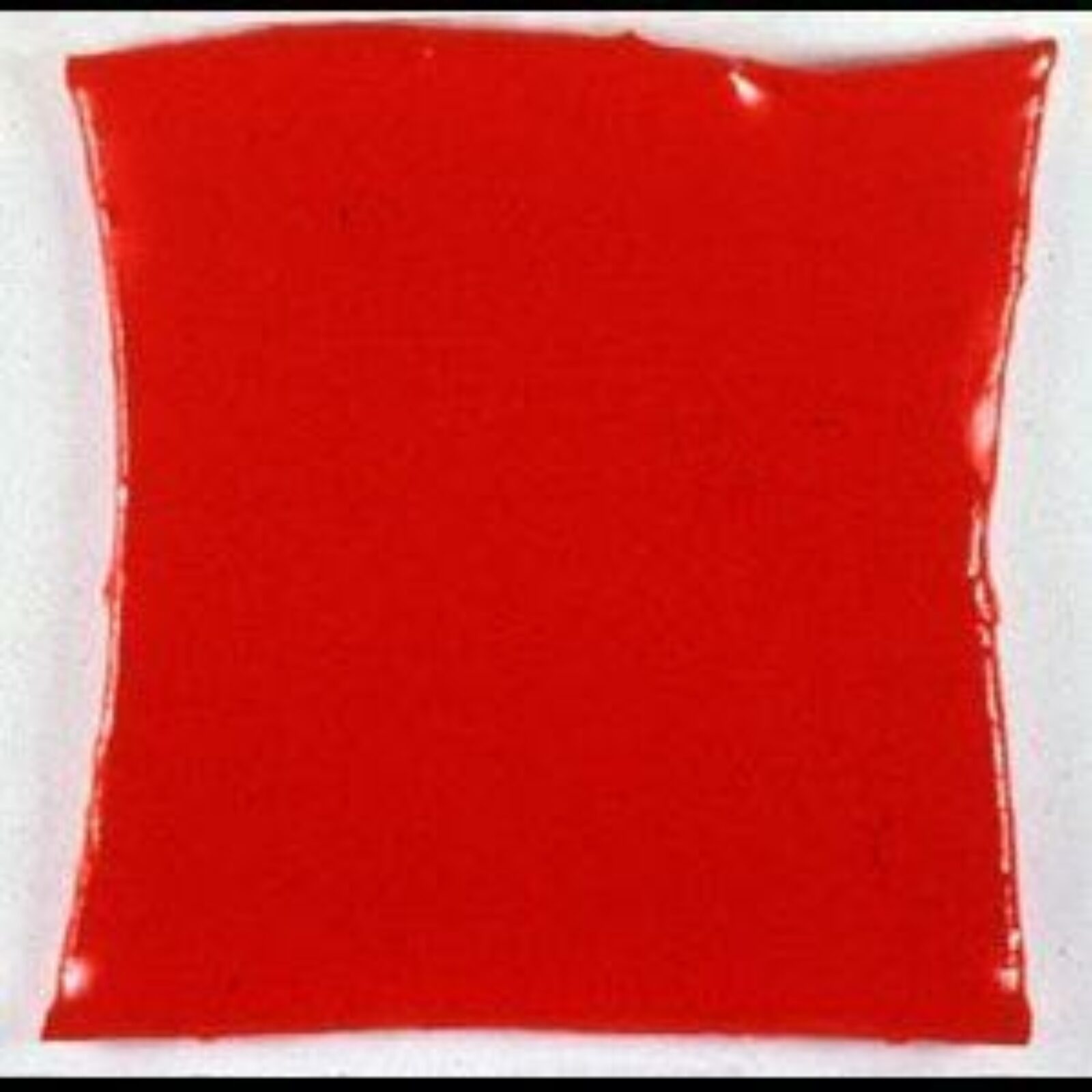

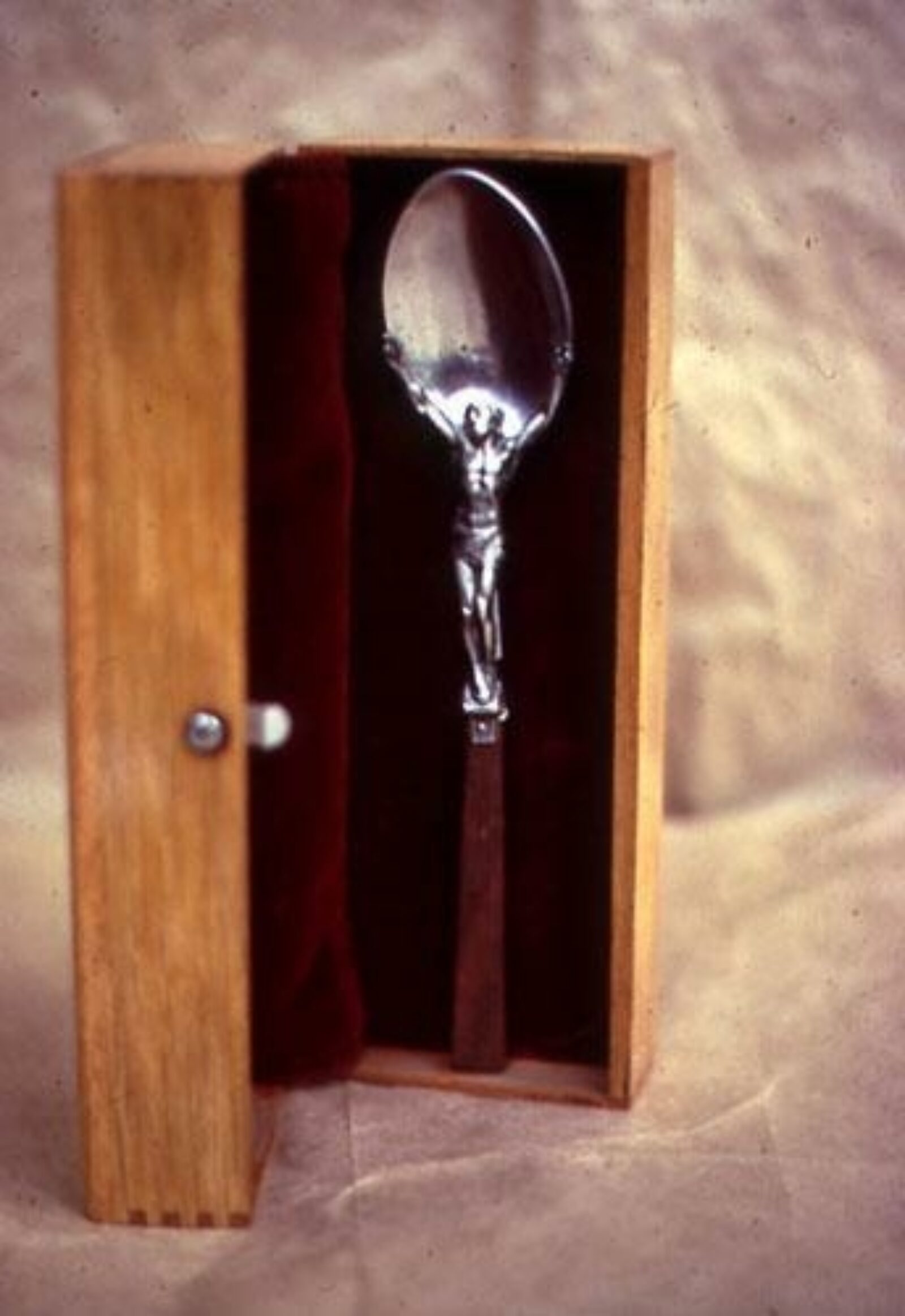

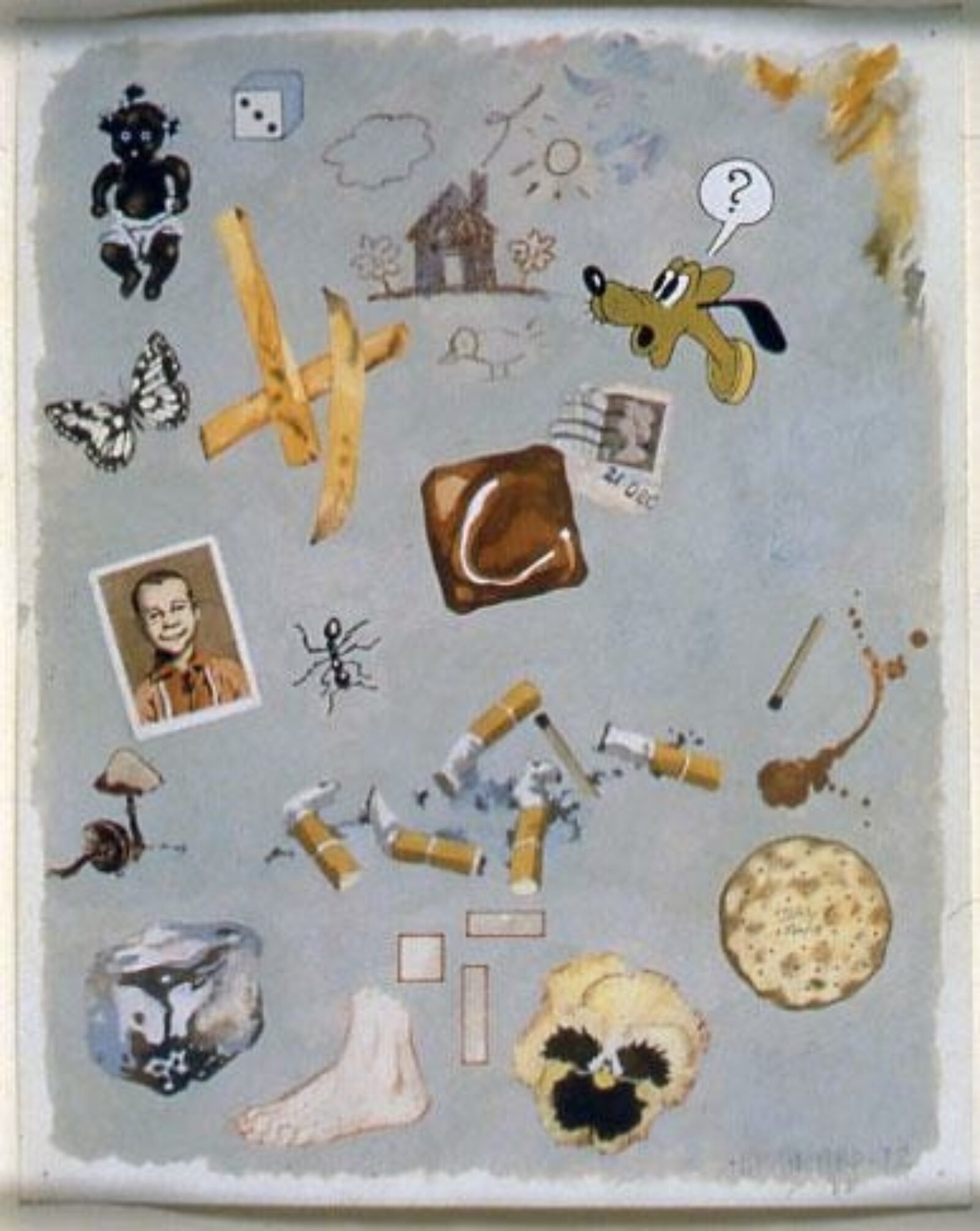
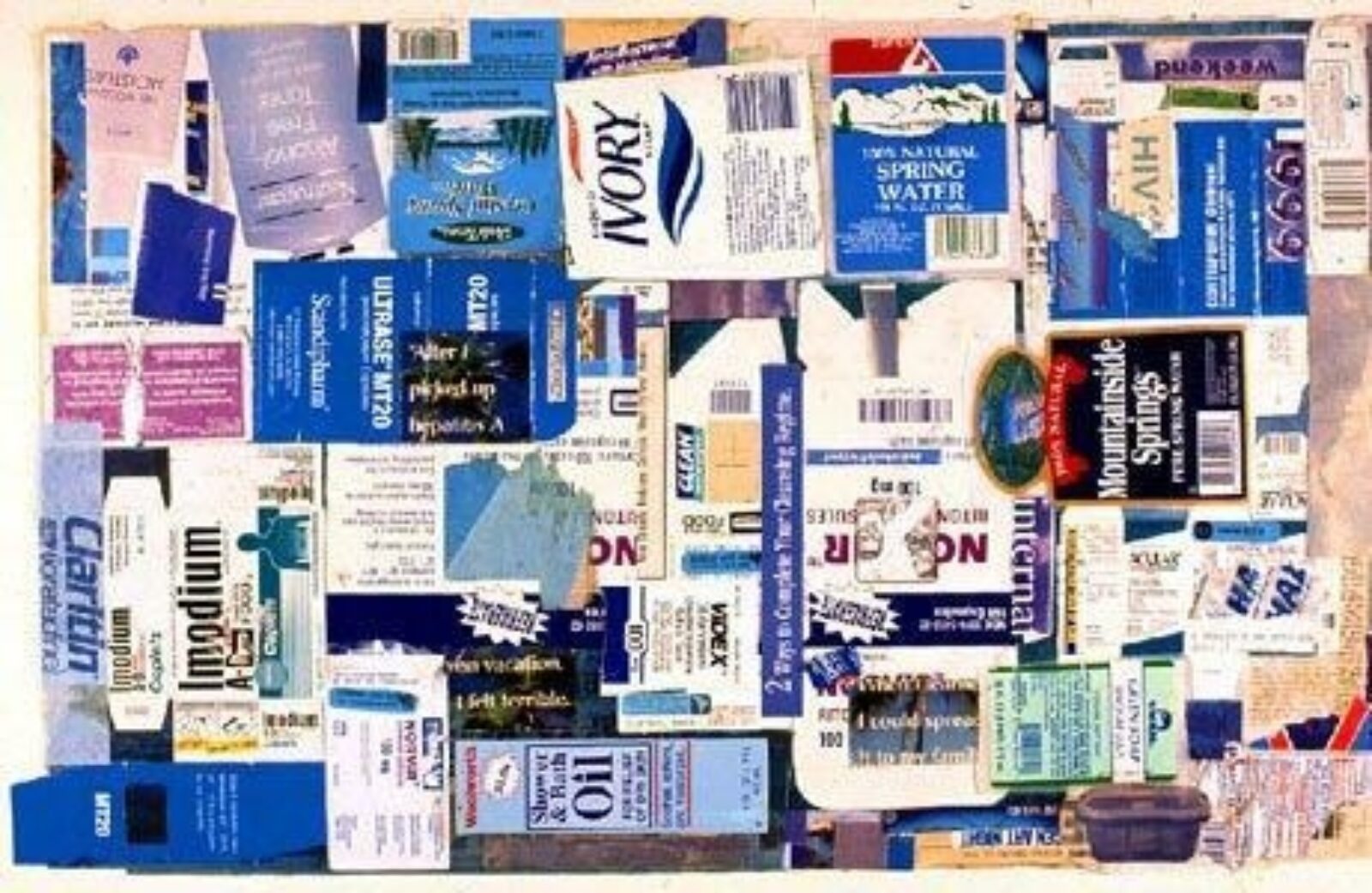



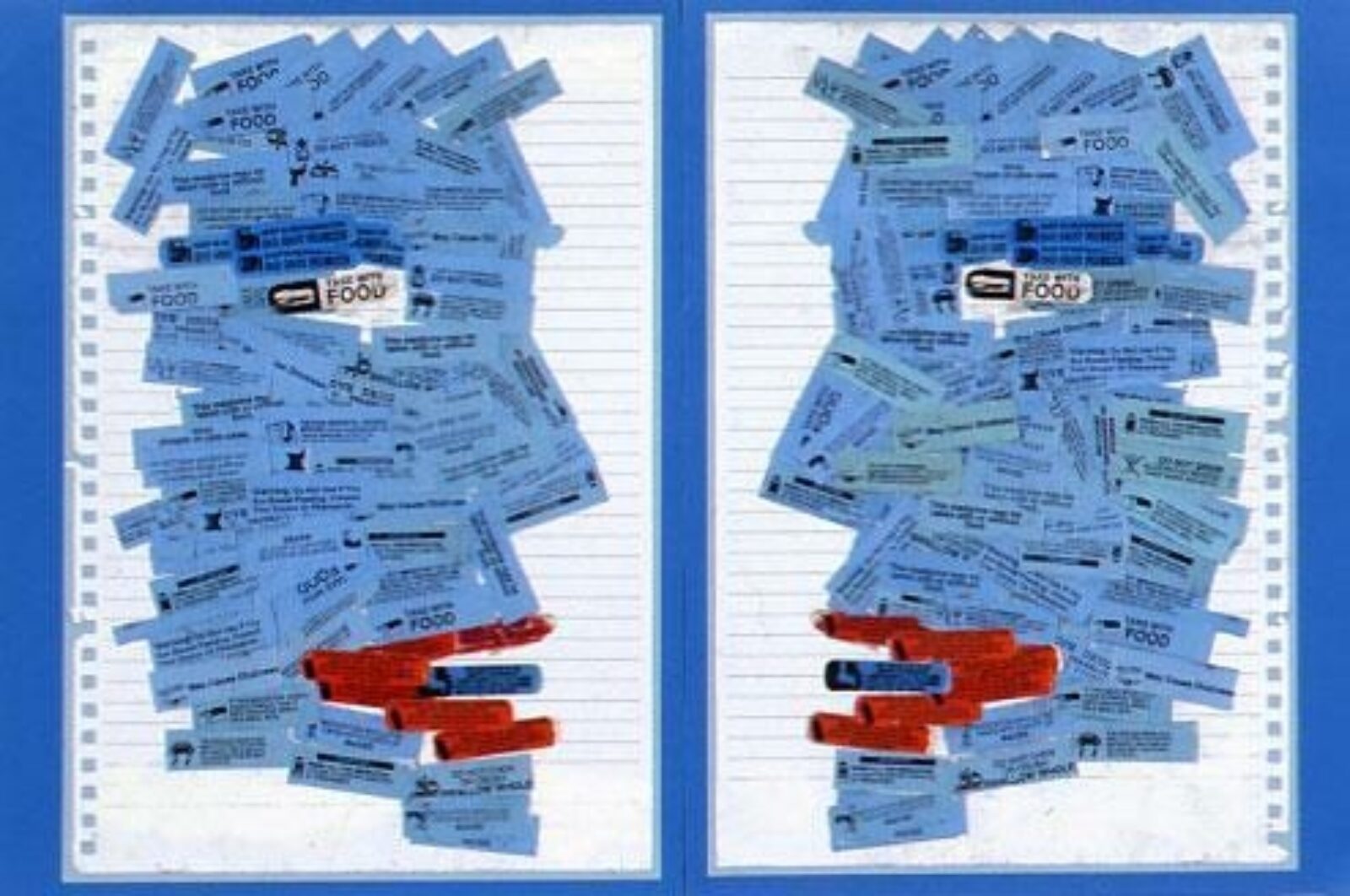


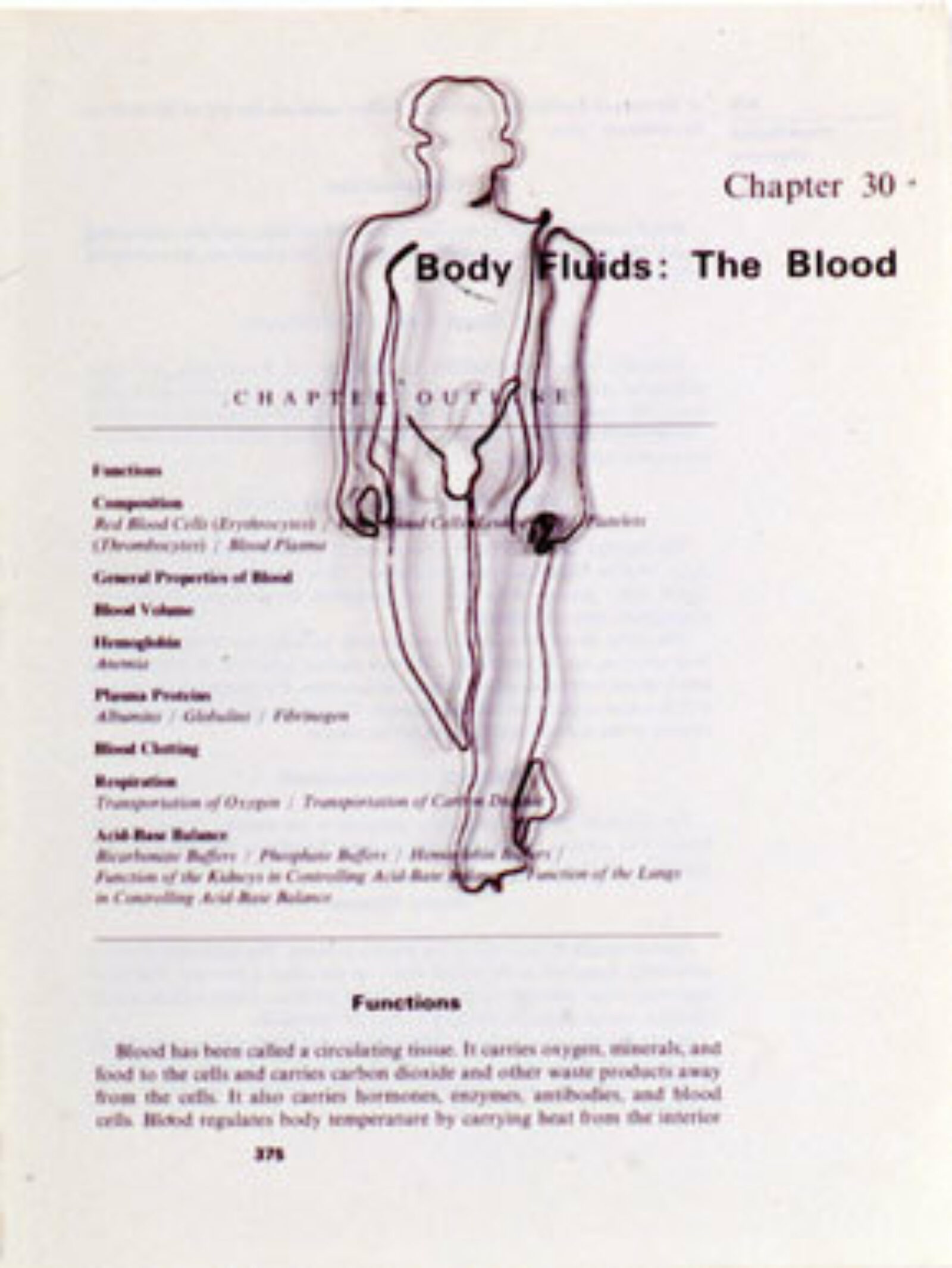
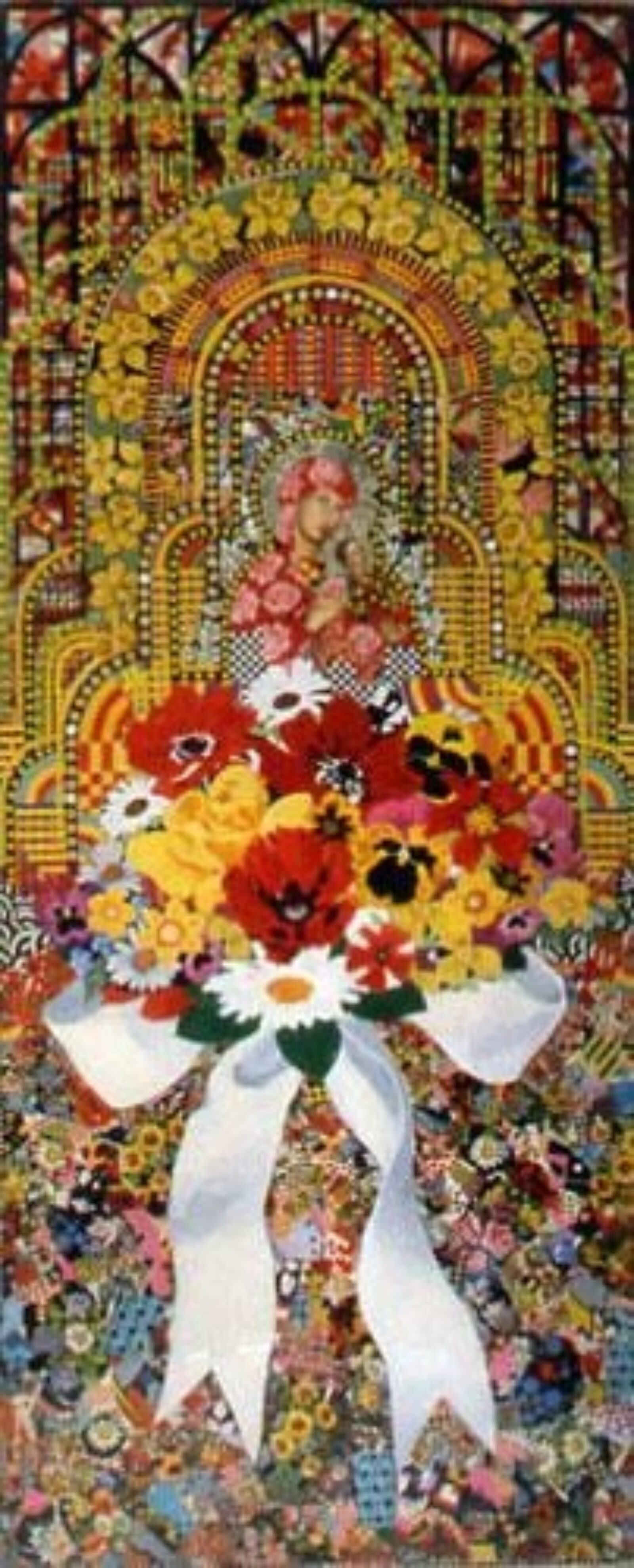
featured gallery for May 2010
Take With Food
I approached my visit to the Visual AIDS archive with some trepidation but a firmly open mind. I knew I would see work by friends who had died. When that happens by chance, maybe turning a corner at an exhibition, or catching sight of a title on the spine of a book in a store, or once on the T-shirt of a young person walking toward me on the street, when it comes upon me without warning like that, I feel like a movie character in a time machine. It's immediately 1982 or thereabouts, the brief sliver of my adult life before anyone knew there was something we'd call AIDS. There is no more potent visceral conjuring of the sharpest memory for me than sudden encounters with the artwork of the people who are so missed. The exact timbre of a voice, the way the city used to look, the shoes someone wore, the feeling of cellophane on a pack of cigarettes, the details that set the place and the moment, rush back to when that artwork was new. Maybe I even saw it wet in the studio, or labeled the slide, or picked it up myself and hung it up on a wall. Frankly, it's just plain sad and I often avoid those situations.
But, when I was invited to curate this Web gallery, I found myself saying "Yes" right away, and decided that I would skip the familiar and look for things that were new to me. I did end up choosing work by friends too, but the inspiration for this group came from seeing a piece by Frederick Weston for the first time. I was so mesmerized by Weston's work Blue in the Face II, made from the direction labels on prescription bottles, that I didn't at first notice they formed an image. "Take with Food," a warning, an order, a ritual, a sacrament, an incantation, a mantra, a prayer. The accumulation of labels, week after week of pills, pills keeping you well, putting what in you, the passing of days, living the lifetime we imagined and fought so hard to see, that one day we could somehow control AIDS. I decided then to look for works of transformation and was excited to see many other things for the first time, including Jonathan Leiter's cast gold chicken bones, Mooshka's pill art, Eric Rhein's wire works, Valerie Caris' corsets, Joseph Modica's crucifix spoon.
As artworks, they sit at the nexus of beauty and action. Most are AIDS-informed, and some of these objects could not have been created without AIDS in the picture. Others mean something wholly different than they might because AIDS exists. All of them transform what is at hand into something truly beautiful.
